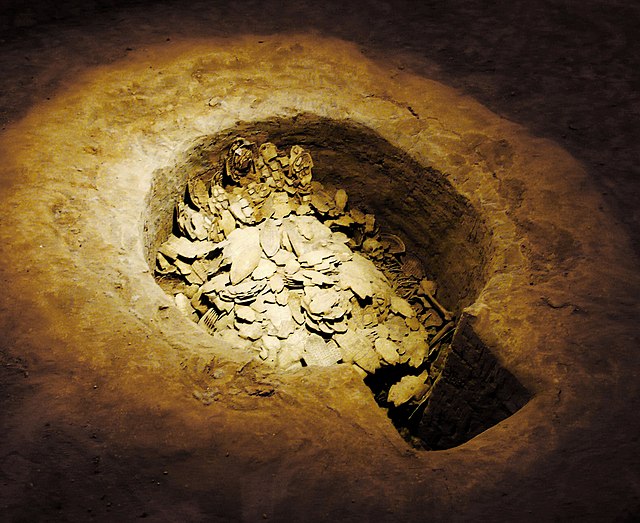The Investiture of the Gods, also known by its Chinese names Fengshen Yanyi (Chinese: 封神演義; pinyin: Fēngshén Yǎnyì; Wade–Giles: Fêng1-shên2 Yan3-yi4; Jyutping: Fung1 San4 Jin2 Ji6) and Fengshen Bang (封神榜), is a 16th-century Chinese novel and one of the major vernacular Chinese works in the gods and demons (shenmo) genre written during the Ming dynasty (1368–1644). Consisting of 100 chapters, it was first published in book form between 1567 and 1619. Another source claims it was published in a finalized edition in 1605. The work combines elements of history, folklore, mythology, legends and fantasy.
Cover of the Investiture of the Gods, book two, from the Harvard University's rare books collection
Illustrations of Fengshen Yanyi from an edition of the novel featuring commentary by Zhong Xing (1574–1625) (book one)
Illustrations of Fengshen Yanyi. Left: Bi Gan and Wen Zhong; Right: King Zhou of Shang and Daji
Illustrations of Fengshen Yanyi. Left: Yang Jian and Nezha; Right: Su Hu and Huang Feihu
The Shang dynasty, also known as the Yin dynasty, was a Chinese royal dynasty that ruled in the Yellow River valley during the second millennium BC, traditionally succeeding the Xia dynasty and followed by the Western Zhou dynasty. The classic account of the Shang comes from texts such as the Book of Documents, Bamboo Annals and Records of the Grand Historian. Modern scholarship dates the dynasty between the 16th and 11th centuries BC, with more agreement surrounding the end date than beginning date.
Shang nephrite statuette depicting a standing dignitary, dating between the 12th and 11th centuries BC, housed at the Arthur M. Sackler Museum at Harvard University
Jade deer dating to the Shang dynasty, in the collection of the Shanghai Museum
Shang jade human figure, tomb of Fu Hao (d.c.1200 BCE). Probably derived from a design of the Seima-Turbino culture.
A pit at Yinxu containing oracle bones ceremonially buried after divination








